Posts Tagged "Targeted marketing"
Articles
- Best Marketing Conference Sponsorship
- What Does it Mean to Be an Exhibitor at a Conference?
- What Is the Biggest Social Media Conference?
- What Is an Innovation Conference?
- What Is a Typical B2B Event?
- What Are the Cloud Technology Events in 2025?
- Marketing Event Volunteer Opportunities: A Comprehensive Guide
- Digital Marketing Event Volunteer Opportunities Near Me
- What Does a Volunteer Do at a Conference?
- Is DigiMarCon Worth It?
- Is DigiMarCon Good?
- What is the Biggest Marketing Forum?
- What are Digital Marketing Conferences?
- Marketing Conference Exhibiting: Your Guide to Success
- Digital Summit Comparison: A Closer Look at DigiMarCon
- Digital Marketing Conference
- Digital Marketing Events: Your Guide to Success in 2025
- Marketing Conferences: Unlocking Your Business Potential in 2025
- What Is The Future of Digital Marketing in 2030?
- B2B Event Marketing Strategy: Unlocking Success For Your Business
- Why B2B Event Marketing?
- What Should a B2B Marketing Strategy Include?
- Top Marketing Conferences for 2025
- What Is the Future of Marketing in 2025?
Digital Marketing Conferences
- NORTH AMERICA
- DigiMarCon Cruise
(New Orleans, LA, USA) - DigiMarCon West
(Los Angeles, CA, USA) - DigiMarCon Northwest
(Seattle, WA, USA) - DigiMarCon Canada West
(Vancouver, BC, USA) - DigiMarCon Canada
(Toronto, ON, Canada) - DigiMarCon Canada East
(Montreal, QC, Canada) - DigiMarCon Florida
(Orlando, FL, USA) - DigiMarCon Gulf Coast
(Houston, TX, USA) - DigiMarCon Southern California
(San Diego, CA, USA) - DigiMarCon Midwest
(Chicago, IL, USA) - DigiMarCon Mid-South
(Nashville, TN, USA) - DigiMarCon Great Lakes
(Detroit, MI, USA) - DigiMarCon North
(Minneapolis, MN, USA) - DigiMarCon Central
(Kansas City, MO, USA) - DigiMarCon Texas
(Dallas, TX, USA) - DigiMarCon New England
(Boston, MA, USA) - DigiMarCon Mid-Atlantic
(Philadelphia, PA, USA) - DigiMarCon South Florida
(Miami, FL, USA) - DigiMarCon Southeast
(Atlanta, GA, USA) - DigiMarCon Central Florida
(Tampa, FL, USA) - DigiMarCon East
(New York, NY, USA) - DigiMarCon South Atlantic
(Charlotte, NC, USA) - DigiMarCon America
(Washington, D.C. USA) - DigiMarCon Northern California
(San Francisco, CA, USA) - DigiMarCon Rocky Mountains
(Denver, CO, USA) - DigiMarCon South
(San Antonio, TX, USA) - DigiMarCon Silicon Valley
(San Jose, CA, USA) - DigiMarCon Orange County
(Anaheim, CA, USA) - DigiMarCon Southwest
(Phoenix, AZ, USA) - DigiMarCon World
(Las Vegas, NV, USA)
- DigiMarCon Cruise
- LATIN AMERICA
- EUROPE
- MIDDLE EAST
- AFRICA
- ASIA PACIFIC
- DigiMarCon Hawaii & Pacific
(Honolulu, HI, USA) - DigiMarCon Asia & Japan
(Tokyo, Japan) - DigiMarCon New Zealand
(Auckland, New Zealand) - DigiMarCon Australia
(Sydney, Australia) - DigiMarCon Oceania
(Melbourne, Australia) - DigiMarCon Southeast Asia
(Singapore) - DigiMarCon India
(New Delhi, India) - DigiMarCon North Asia & China
(Shanghai, China)
- DigiMarCon Hawaii & Pacific
- VIRTUAL
Digital Marketing Blog
- What Makes DigiMarCon Stand Out (And Is It Worth It?) October 30, 2025
- Is DigiMarCon Worth Attending? A Complete Breakdown October 29, 2025
- DigiMarCon for Startups: Why Founders Shouldn’t Miss It October 29, 2025
- DigiMarCon Recap: What Went Down and What’s Next October 29, 2025
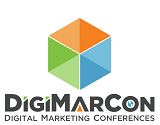


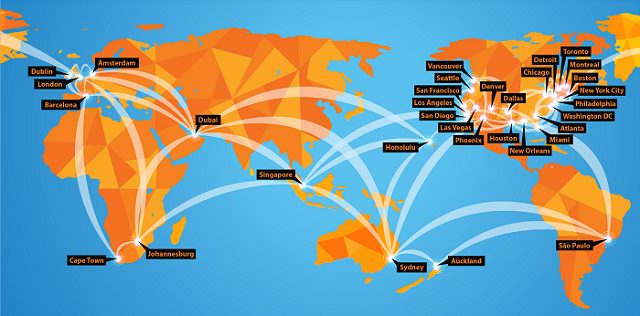


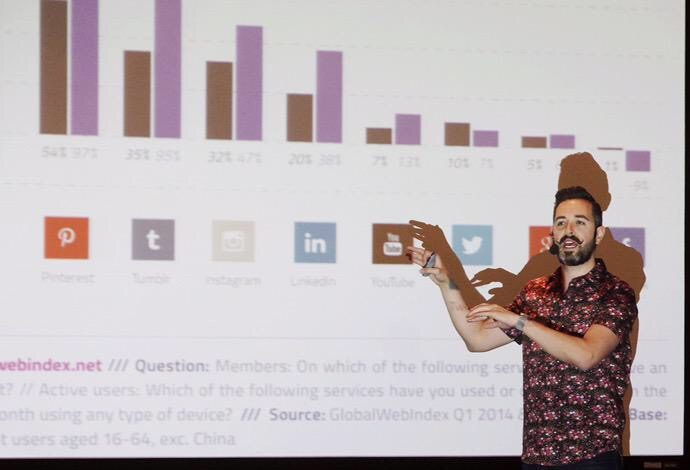


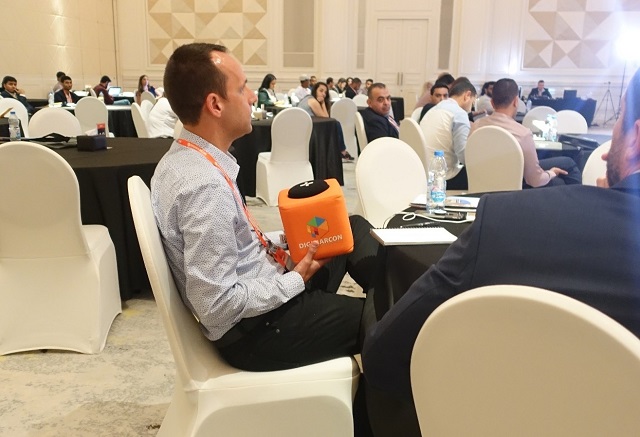

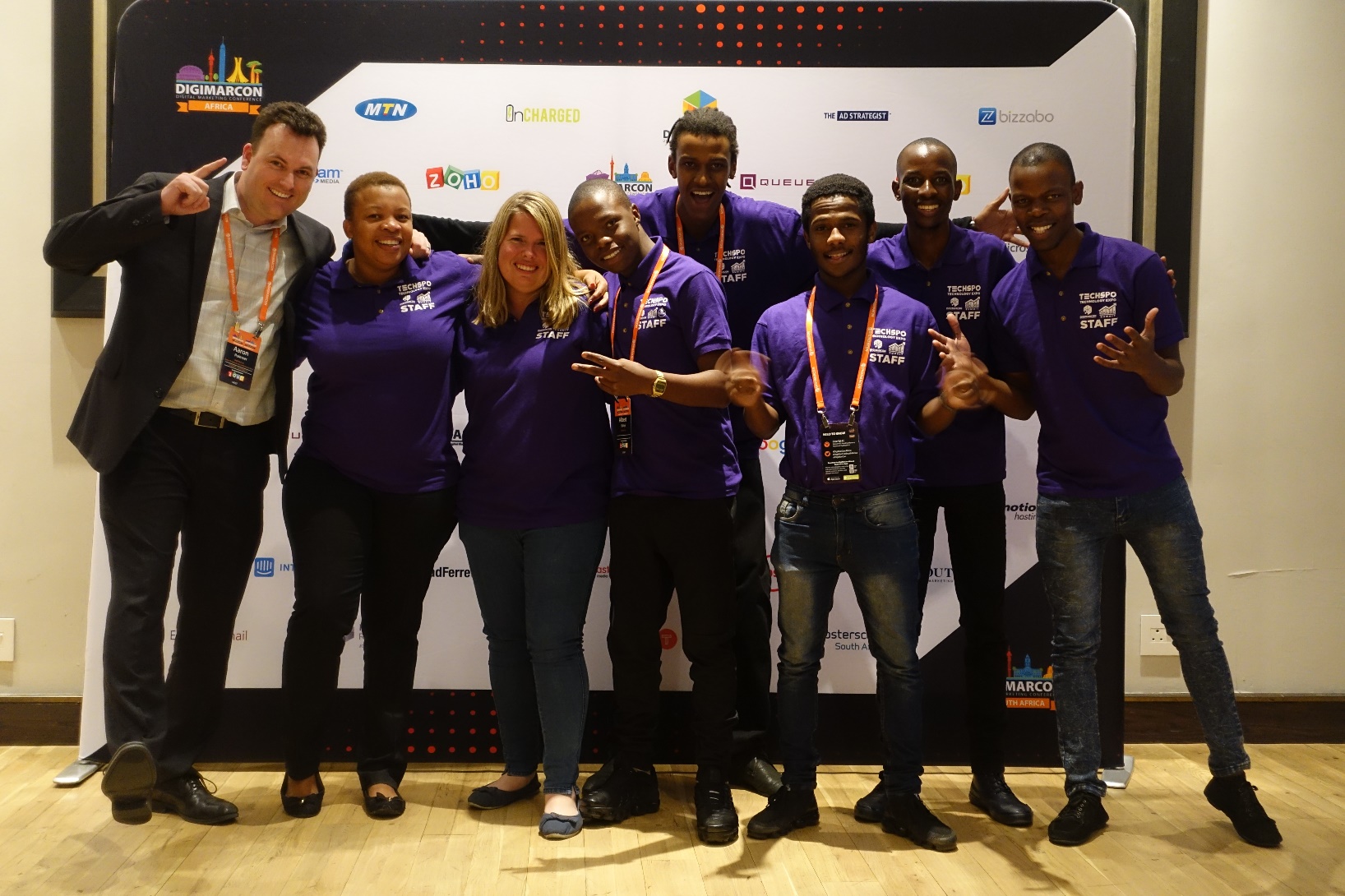





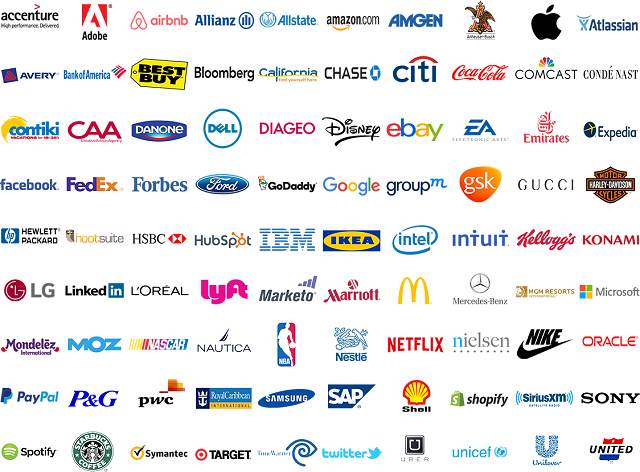















Maximize Influencer Microtargeting for Your Brand
In today’s digital world, targeted marketing strategies are key for brands wanting to boost their online presence. They help drive conversions. By using influencer marketing, businesses can reach specific audiences with great accuracy.
This method, called influencer microtargeting, lets brands connect with social media influencers. These influencers have built trust with their followers. This can lead to more people knowing about the brand, better engagement, and higher sales.
To get the most out of targeted marketing strategies, understanding influencer microtargeting is crucial. This article will explore the details of influencer microtargeting. It will also offer practical advice for brands aiming to improve their marketing.
The Evolution of Influencer Marketing in the Digital Age
Influencer marketing has changed a lot since it started. It’s now a key part of digital marketing. The rise of social media influencers has helped brands reach specific audiences better than ever before.
At first, influencer marketing was all about celebrity endorsements. But with the growth of social media platforms like Instagram, YouTube, and TikTok, new influencers appeared. They have big followings in certain areas, making them great for brands wanting to connect with micro-audiences.
The growth of influencer marketing is linked to social media’s growing role in our lives. Brands are now spending more on influencer marketing. They see its value in creating authentic engagement and getting a clear measurable ROI. This has led to new platforms and tools for working with influencers and tracking campaigns.
Now, influencer marketing is a complex field. Brands use social media influencers to boost awareness, drive sales, and build loyalty. As digital marketing keeps changing, influencer marketing will stay a key part of marketing plans.
What Is Influencer Microtargeting and Why It Matters
The digital marketing world is changing fast. Now, it’s all about audience segmentation with influencer microtargeting. This method lets brands reach their audience better. They use micro-influencers who really know their niche communities.
Core Components and Principles
Influencer microtargeting has key parts:
This way, brands can make campaigns that really get people involved and lead to sales.
Distinguishing Features from Traditional Campaigns
Influencer microtargeting is different from old-school influencer marketing. It’s all about being precise and personal. Here’s what sets it apart:
By using influencer microtargeting, brands can make a bigger splash. They build a stronger bond with their audience.
The Business Case for Precision Influencer Strategies
The business case for precision influencer strategies is strong. It’s based on targeted outreach and analysis. Brands can reach their target audiences better, leading to deeper engagement.
Trust-Building Through Relevance
Precision influencer strategies help brands find influencers who really connect with their audience. This relevance is key to building trust. Through target market analysis, brands can find the best influencers for their marketing.
Community Development Opportunities
These strategies also open up big community development opportunities. By working with micro-influencers, brands can join local communities. This makes their products or services seem natural and trustworthy.
In the end, using precision influencer strategies can bring big wins. Brands see better trust, relevance, and community growth. As the digital world changes, these targeted methods will help brands stay ahead.
Identifying and Segmenting Your Brand’s Micro-Audiences
The secret to great influencer marketing is knowing your audience well. You need to understand more than just basic details. You must know what they like and how they act.
Demographic Profiling Techniques
Starting with demographics is key. It’s about sorting your audience by things like age, gender, and income. Using data tools helps brands see who they’re talking to. For example, a beauty brand might find their main customers are women aged 25-45 with some money to spend.
This info helps in making marketing more focused. It means picking influencers who fit these groups well.
Psychographic Analysis Methods
Psychographic analysis looks at what makes people tick. It’s about values, attitudes, and lifestyle. This lets brands really connect with their audience.
For instance, a fitness brand might find a group that cares about the planet and health. Working with influencers who share these values helps the brand speak to this audience better.
By using both demographics and psychographics, brands get a full picture of their audience. This is key for influencer microtargeting. It means choosing influencers who match both the audience’s demographics and values. This makes influencer marketing more precise and successful.
Selecting the Perfect Micro-Influencers for Your Niche
Finding the right micro-influencers is crucial for brands aiming at specific niches. It’s about understanding how to work with influencers to boost your brand’s visibility and engagement.
Content Analysis Methodologies
Brands need to use detailed content analysis to pick the best micro-influencers. They should check the quality, relevance, and how well the influencer’s content engages their audience. High-quality content that speaks to the audience is essential. Look for influencers who share your niche and values.
It’s also important to look at the influencer’s audience. Check their age, location, and interests to see if they match your target audience. Advanced analytics tools can help uncover this information, guiding your choices.
Red Flags and Green Lights in Selection
When choosing micro-influencers, watch out for red flags and green lights. Red flags include inconsistent content quality, low engagement rates, and inauthentic audience demographics. Green lights are high engagement rates, content that matches your brand, and an audience that fits your target.
Choosing the right micro-influencers means picking those who genuinely connect with their audience and create quality content. This way, brands can improve their marketing and meet their goals.
In summary, picking the right micro-influencers requires a deep dive into their content, audience, and engagement. Knowing the red flags and green lights helps brands make smart choices for successful influencer partnerships.
Developing a Strategic Influencer Microtargeting Framework
To make the most of influencer marketing, brands need a solid plan. This plan should match their microtargeting goals. It’s about knowing how to target specific groups of people.
A good influencer microtargeting plan has a few key parts. First, figuring out who your micro-audiences are is crucial. This means looking at what people like and do to make detailed profiles.
Message Customization Guidelines
It’s important to tailor your message for each group. Here’s how to do it:
Maintaining Brand Voice Across Influencers
Keeping a consistent brand voice with different influencers is key. Here’s how to do it:
By following these steps and building a strong plan, brands can improve their influencer marketing. They’ll make sure their message hits the right people and gets them involved.
Advanced Techniques in Influencer Microtargeting
Advanced influencer microtargeting is changing how brands talk to their fans. It brings precision and personal touch to marketing. Brands can make their influencer campaigns better, thanks to social media influencers who connect with specific groups.
Age-Specific Targeting Tactics
Age-specific targeting means making marketing fit the age of the audience. For example, a brand for Gen Z might work with influencers who are popular among the young. This way, the content and platforms used are perfect for that age group. This method can lead to more people engaging with the brand and better messaging.
To use age-specific targeting, first figure out who your audience is. Look at customer data and research to find the right age ranges. Knowing what different ages like helps brands tailor their marketing better.
Lifestyle and Value-Based Segmentation
Lifestyle and value-based segmentation targets people based on their interests and values, not just age. This way, brands can connect with their audience on a deeper level. By teaming up with influencers who match their audience’s lifestyle, brands can make their marketing more real and engaging through effective influencer outreach.
To use this approach well, brands need to know what their audience likes and values. They can do this by researching the market and looking at customer data. Aligning marketing with the audience’s lifestyle and values helps build stronger bonds and loyalty.
Using advanced methods like age-specific targeting and lifestyle segmentation can make influencer marketing more effective. This boosts brand awareness and engagement, and helps create deeper connections with the audience.
Essential Tools and Platforms for Influencer Microtargeting
To do influencer microtargeting well, brands need the right tools and platforms. They use technology to make campaigns run smoothly and get the best return on investment.
Automation Tools for Scale
Automation tools are key for growing influencer microtargeting campaigns. They help brands:
Platforms like Marketify and InfluencerHub make managing many influencer partnerships easier.
Relationship Management Systems
Good relationship management systems are crucial for keeping strong ties with influencers. These systems help brands:
Using these systems, brands can build lasting relationships with influencers. This makes their microtargeting efforts more effective.
Measuring the Success of Your Microtargeting Efforts
To see how well influencer collaborations work, you need a solid way to measure them. This means tracking how well your microtargeting does with different metrics and methods.
Measuring success starts with conversion tracking. This means watching what your audience does after seeing an influencer’s content. With conversion tracking, you can see if sales, sign-ups, or other actions come from those influencer posts.
Conversion Tracking Methodologies
There are a few ways to track conversions well:
Long-Term Value Assessment
It’s not just about quick wins. You also need to look at the long-term value of customers from influencer campaigns. This means checking how well they stick around, their lifetime value, and how they affect your brand’s growth and revenue.
By looking at both short-term conversions and long-term value, you get a full picture of your efforts. This helps you make smarter choices for your audience segmentation strategies.
Case Studies: Brands Winning with Influencer Microtargeting
Many brands have seen big wins by using influencer microtargeting strategies. They focus on specific groups to boost engagement, sales, and profits.
Beauty and Fashion Sector Innovations
In beauty and fashion, micro-influencers are key. They help reach niche audiences. For example, a beauty brand teamed up with a micro-influencer to promote new skincare. This led to more brand awareness and sales among the right people.
This success came from the micro-influencer’s engaged audience. It matched the brand’s target perfectly. This partnership helped the brand reach new customers.
Tech Industry Targeting Breakthroughs
In tech, targeted marketing strategies help brands reach specific groups. This drives adoption and sales of new tech. A tech company used micro-influencers to promote a new gadget. They saw a big jump in pre-orders and positive feedback.
The campaign’s win was thanks to choosing the right micro-influencers. Their audience was a perfect match for the brand. This targeted approach paid off big time.
These stories show how influencer microtargeting can boost business results. By using smart marketing and the right influencers, brands can see big wins in engagement, sales, and profits.
Conclusion: Future-Proofing Your Brand with Strategic Influencer Partnerships
Brands need to keep up with the digital world’s changes. Influencer marketing is key, with influencer microtargeting being a sharp tool for reaching specific groups. This method helps brands make campaigns that really connect with people.
The perks of influencer microtargeting are obvious: it boosts your brand’s visibility, saves money, and gives you valuable insights. To stay ahead, create a smart plan for working with influencers. This will help you handle the digital world’s shifts and beat rivals.
When you’re planning your influencer marketing, always check and improve your efforts. The right strategy makes influencer marketing a strong way to grow your brand’s success.
FAQ
What is influencer microtargeting, and how does it differ from traditional influencer marketing?
Influencer microtargeting is a detailed way to market through influencers. It focuses on specific groups with messages that match their interests. This is different from traditional marketing, which tries to reach a wider audience.
How do I identify the right micro-influencers for my brand’s niche?
To find the right influencers, check if their content and audience match your brand. Look at their past work and how well they connect with your audience. This helps ensure their messages align with your brand’s values.
What are the key benefits of using influencer microtargeting for my brand?
Microtargeting helps you reach the right people with messages they care about. This leads to better engagement and more sales. It also helps build a loyal community by being more relevant.
How can I measure the success of my influencer microtargeting efforts?
Use tools to track how your audience acts after seeing your ads. Also, look at how your campaigns affect your brand over time. This shows the lasting impact of your efforts.
What tools and platforms are essential for effective influencer microtargeting?
You need tools that automate your campaigns and help manage your influencer relationships. These tools make it easier to find, work with, and keep track of influencers.
Can influencer microtargeting be applied across different industries, such as beauty, fashion, and tech?
Yes, microtargeting works in many industries. It lets brands in beauty, fashion, tech, and more target specific groups. This makes their marketing more effective.
How do I ensure that my brand’s voice is maintained across different influencers?
Create clear rules for influencers about your brand’s voice and message. Then, check their content often to make sure they follow these guidelines.
What are some advanced techniques in influencer microtargeting that I can leverage?
Try targeting by age or by interests and values. This means sending messages that fit the specific needs and preferences of your audience.
Boost Your Business with Account-Based Marketing
In today’s fast-paced business world, companies are always looking for new ways to grow. Account-Based Marketing (ABM) is a strategy that’s gaining popularity. It focuses on targeting key accounts and making marketing efforts personal to meet their needs.
Using an ABM strategy can really help businesses. It improves sales, customer engagement, and revenue. This method allows companies to offer personalized experiences to their most important clients. This builds stronger relationships and leads to long-term success.
Key Takeaways
Understanding the Power of Account-Based Marketing
Account-Based Marketing (ABM) is changing B2B marketing. It’s a powerful way to grow and make more money. More businesses are using it to improve their marketing and sales.
The Evolution of B2B Marketing Approaches
Old B2B marketing was about getting lots of leads. But now, it’s all about targeting the right people. ABM leads this change, focusing on personalization and key account targeting.
Core Principles of ABM
ABM has a few main ideas. First, it picks the best accounts to target. Then, it makes detailed profiles for each account. Finally, it brings sales and marketing together to reach those accounts.
How ABM Differs from Traditional Marketing Strategies
ABM is different because it focuses on specific accounts. It makes marketing more personal and effective. This way, businesses build stronger relationships and grow over time.
The Business Case for ABM Implementation
Account-Based Marketing (ABM) can change the game for businesses aiming to increase revenue and improve account-based sales opportunities. It focuses on key target accounts and makes marketing more personal. This leads to better sales and marketing teamwork.
ROI Benefits and Financial Impact
ABM is a smart choice because it offers a big return on investment (ROI). It targets high-value accounts and customizes marketing to meet their needs. This approach boosts conversion rates and grows revenue. Research shows ABM can greatly increase ROI over traditional marketing.
Achieving Sales and Marketing Alignment
ABM brings sales and marketing teams closer by setting common goals. This is key for making marketing efforts directly support sales. It leads to better lead nurturing and turning leads into sales.
Resource Optimization and Efficiency
ABM helps businesses use their marketing resources better by focusing on key accounts. This ensures marketing efforts are aimed at accounts most likely to convert. It maximizes the ABM strategy‘s impact.
In summary, the case for ABM is strong. It offers big benefits in ROI, sales and marketing teamwork, and resource use. As B2B marketing gets more complex, an effective ABM strategy is crucial for growth and revenue.
Building an Effective Account-Based Marketing Strategy
To create a winning Account-Based Marketing (ABM) strategy, you need to know your target accounts well. This means starting by picking the most valuable accounts to focus on.
Identifying and Selecting High-Value Target Accounts
The first step is to find and choose high-value target accounts. These are the ones that could bring in a lot of revenue. You use data-driven account selection methods to pick them. This involves looking at firmographic and technographic data, and intent data to see if they’re looking for what you offer.
Data-Driven Account Selection Methods
Choosing accounts based on data means using many sources. You look at firmographic data like company size and location. And technographic data to see what tech they use.
Prioritization Frameworks
After finding potential accounts, you use prioritization frameworks to decide which to go after first. These frameworks look at how much money they could make, if they fit your strategy, and how they buy things.
Creating Detailed Ideal Customer Profiles
Creating detailed ideal customer profiles is key for B2B personalized marketing. You gather info on what your ideal customers are like, what they need, and what problems they face. This helps you tailor your marketing just for them.
Setting Clear and Measurable ABM Objectives
Lastly, setting clear and measurable ABM objectives is vital. It helps drive demand generation and makes sure your ABM strategy matches your business goals. You define KPIs like how many people engage, how many convert, and how much revenue comes from these accounts.
By following these steps, businesses can craft a strong ABM strategy. This strategy boosts personalized engagement and demand generation. It leads to more revenue and growth.
Account Segmentation and Personalization Techniques
In ABM, segmenting target accounts well and making marketing messages fit is key. Good segmentation helps marketers find and focus on the most valuable accounts. This way, they can make their marketing work harder.
Implementing Tiered Account Approaches
A tiered account method sorts target accounts into levels based on their value or importance. This helps marketers use their resources better, focusing on the most important accounts.
Industry and Firmographic Segmentation
Segmenting by industry and firmographic data (like company size, location, and revenue) helps create targeted campaigns. These campaigns meet the specific needs and challenges of each group.
For example, a company targeting the healthcare industry can craft messages that address the unique challenges healthcare organizations face.
Personalization at Scale: Balancing Customization with Efficiency
Personalizing at scale is about finding the right mix of customization and efficiency. Marketers use technology and data to offer personalized content and experiences. They do this without losing scalability.
By using these strategies, businesses can improve their ABM efforts. This leads to more meaningful engagement and higher conversion rates.
Executing Targeted ABM Campaigns
Running targeted ABM campaigns is key for businesses wanting to make their marketing more personal. They need a strategic plan that includes using different channels, creating content just for those accounts, and precise ads.
Multi-Channel Engagement Strategies
To do ABM well, you must reach out to target accounts in many ways. This means:
Digital Touchpoints
Digital spots are vital in ABM. They help businesses reach their audience online. This includes email marketing, social media, and online ads. Using these, marketers can get their brand seen more and connect with important people.
Direct and Personal Outreach
Direct and personal contact is also important. It helps build real connections with target accounts. This can be through personal emails, phone calls, and one-on-one meetings. These personal touches show you really get what they need, making them more likely to choose you.
Content Creation for Target Accounts
Creating content is a big part of ABM. It lets businesses talk directly to their target audience’s needs. By making content just for them, marketers can show they understand their problems, making their brand a trusted advisor.
When making content, remember to:
Account-Based Advertising and Retargeting
Advertising and retargeting are key parts of a good ABM plan. By showing ads to specific accounts, businesses can keep their message alive and stay in front of decision-makers.
Good account-based ads need:
Lead Nurturing in the ABM Context
Lead nurturing in ABM is about making personalized experiences that connect with target accounts. This helps businesses build strong relationships with their most valuable customers. It’s about understanding and meeting their unique needs.
Nurturing Accounts with Precision
Account-focused nurture sequences aim to engage target accounts with custom content and interactions. These sequences include:
Stakeholder Mapping and Engagement
Effective stakeholder mapping is key to understanding the complex dynamics within target accounts. By identifying and engaging key stakeholders, businesses can:
Converting Interest into Account-Based Sales Opportunities
The ultimate goal of lead nurturing in ABM is to turn interest into real sales opportunities. This involves:
By using these strategies, businesses can improve their lead nurturing. This leads to more effective account-based sales opportunities. It also helps in growing long-term through B2B personalized marketing.
Essential ABM Technology and Tools
Effective ABM needs various technologies to make marketing easier. This includes data analysis and campaign execution. Businesses must use advanced tools and technologies for a successful ABM strategy.
CRM Integration for Account Management
CRM Integration for Account Management
Customer Relationship Management (CRM) systems are key for ABM. They help manage account data and interactions in one place. Integrating CRM with other ABM tools makes data sharing smooth, improving account insights and marketing efforts.
For example, Salesforce and Microsoft Dynamics are top CRMs that work well with ABM tools for better account management.
Account Intelligence and Intent Data Platforms
Account intelligence and intent data platforms are vital for finding and understanding valuable accounts. They collect data to give insights into account behavior and intent. Tools like 6sense and DemandBase help marketers create targeted ABM campaigns.
Marketing Automation for ABM Execution
Marketing automation platforms are crucial for running ABM campaigns on a large scale. They help create personalized content, automate workflows, and track engagement. By combining marketing automation with CRM and account intelligence, businesses can have a strong ABM strategy.
Popular tools like Marketo and Pardot can be customized for ABM. Using these technologies can improve ABM strategies, account management, and campaign results. The right combination of CRM, account intelligence, and marketing automation is essential for ABM success.
Measuring and Optimizing ABM Success
To measure the success of Account-Based Marketing (ABM), businesses need to use data. They should track key performance indicators (KPIs) to see how ABM affects target accounts.
Key Performance Indicators for Account-Based Programs
Measuring ABM success starts with the right KPIs. These metrics show how ABM efforts impact target accounts and boost revenue.
Engagement Metrics
Engagement metrics are key to seeing how target accounts interact with your content. They include:
By watching these metrics, marketers can see how interested target accounts are.
Pipeline and Revenue Impact
The true test of ABM is its effect on the sales pipeline and revenue. Marketers should look at:
This shows how ABM directly affects the bottom line.
Account Penetration Analysis
Account penetration analysis looks at how deep you’ve reached into target accounts. It checks the number of stakeholders engaged, the range of services or products sold, and revenue growth from these accounts.
Continuous Improvement Frameworks
To keep ABM successful, businesses must always look to improve. They should regularly check performance data, ask sales teams for feedback, and keep up with industry trends. This helps refine ABM strategies over time.
By using these strategies, businesses can make their ABM programs better. This leads to more engagement, revenue, and growth from target accounts.
Conclusion
Businesses are facing tough challenges in B2B marketing. Using an Account-Based Marketing (ABM) strategy is key. It helps focus on important accounts and makes marketing more personal.
This approach leads to better sales, more customer engagement, and higher revenue. It’s all about improving how sales and marketing work together.
To do ABM well, you need to know your audience inside out. Use data and analytics to guide your marketing. This way, you can tailor your strategies to fit your business needs.
By doing this, you can get the most out of your marketing efforts. It helps your business grow over time.
Using B2B personalized marketing with ABM helps build strong relationships with key accounts. As marketing keeps changing, using ABM strategies is vital. It helps businesses stay competitive and succeed in the long run.
FAQ
What is Account-Based Marketing (ABM) and how does it differ from traditional marketing strategies?
Account-Based Marketing (ABM) targets high-value accounts with personalized marketing. It’s different from traditional marketing, which casts a wide net. ABM focuses on specific accounts, leading to better engagement and conversion rates.
How do I identify and select high-value target accounts for my ABM strategy?
To find high-value accounts, use data and frameworks. Look at firmographic data, industry trends, and growth potential. This helps determine which accounts are most likely to grow your revenue.
What role does personalization play in ABM, and how can it be achieved at scale?
Personalization is key in ABM, making marketing efforts resonate with target accounts. To do this at scale, use technology like marketing automation and account intelligence platforms. This balances customization with efficiency.
How can I measure the success of my ABM initiatives?
Track KPIs like engagement, pipeline, and revenue impact to measure ABM success. Use continuous improvement frameworks to refine your strategies over time.
What technologies are essential for implementing a successful ABM strategy?
Key technologies for ABM include CRM integration, account intelligence, and marketing automation. These tools help streamline efforts and boost marketing efficiency.
How does ABM contribute to sales and marketing alignment?
ABM aligns sales and marketing by focusing on the same high-value accounts. This ensures marketing supports sales goals, leading to better collaboration and revenue.
What are some common challenges in implementing an ABM strategy, and how can they be overcome?
Challenges include data quality, sales and marketing alignment, and personalizing content. Overcome these by investing in technology, fostering collaboration, and refining strategies based on data.
Unlock the Power of Local SEO for Your Business
In today’s digital world, businesses must boost their online presence to draw in local customers. The right strategies can help you climb search rankings, bring in more customers, and boost sales.
As a digital marketing expert, knowing how to optimize for local search is key. It helps businesses succeed in their local areas. By using local SEO, you can outdo rivals and meet your goals.
Key Takeaways
What is Local SEO?
More and more people use online searches to find local products and services. This makes local SEO very important. It helps websites rank higher in local search results.
For businesses with physical locations, local SEO is key. It helps them reach customers in their area. By improving their online presence, businesses can get more people to visit their stores.
Definition and Importance
Local SEO uses strategies to make websites more visible in local search results. It involves optimizing content, structure, and coding. It also includes building local citations and creating content for the local audience.
Local SEO connects businesses with local customers. By showing up in local search results, businesses can get more online visibility. This leads to more website traffic and higher sales.
Key Differences From Regular SEO
Regular SEO aims to improve a website’s visibility globally. But local SEO services focus on specific areas. They use location-based keywords and create local content.
Local SEO also emphasizes local citations and reviews. These are important for local search rankings. Encouraging customers to leave reviews is a big part of local SEO.
Why Local SEO Matters for Your Business
For businesses of all sizes, local SEO strategies are now essential. With more people using online searches for local products and services, a strong local SEO can make a big difference. It can help your business be seen by potential customers or be missed.
Local SEO is key for small businesses. It lets them compete fairly with big companies. By improving their online presence for local searches, small businesses can get more people to visit their stores. This can lead to more sales.
Benefits for Small Businesses
Small businesses gain a lot from good local SEO. Some main benefits are:
By using local SEO strategies, small businesses can be seen by people looking for what they offer right when they need it.
Impact on Customer Acquisition
Local SEO’s effect on getting new customers is huge. By showing up in local search results, businesses can attract more people to their websites and stores. This increases the chance of turning these visitors into customers.
Also, a good local SEO plan can make customers more loyal. Businesses can connect with their customers better through online platforms.
How to Optimize Your Google My Business Listing
A well-optimized Google My Business listing can make your business easier to find. It helps customers discover and interact with your business.
First, claiming and verifying your Google My Business listing is key. It ensures your business info is correct and lets you control how it appears online.
Claiming Your Listing
Claiming your Google My Business listing means verifying your business info. Google uses this process to confirm your business’s authenticity. It’s vital for local SEO, helping Google know your business’s location and relevance.
Best Practices for Photos and Descriptions
After claiming and verifying, optimize your listing with great photos and descriptions. High-quality photos show off your products, services, and business. They give potential customers a visual idea of what you offer.
For photos, keep these tips in mind:
Your business description should be engaging and informative. It should highlight your unique selling points and services. By following best local SEO practices, you can improve your online presence and attract more customers.
Optimizing your Google My Business listing and following local SEO agencies guidelines can boost your local search rankings. Regular updates and engaging with customer reviews can also increase your visibility.
Understanding Local Keywords
As a local SEO expert, finding the right local keywords is key. These are terms people use to find products or services near them. Knowing these keywords helps in creating a strong local SEO plan.
Tools for Keyword Research
Businesses can use many tools to find local keywords. Google Keyword Planner, Ahrefs, and SEMrush are popular choices. They help analyze search volume, competition, and bid prices, guiding local SEO efforts.
Key features to look for in keyword research tools include:
Incorporating Keywords into Your Content
After finding local keywords, it’s time to add them to your content. This includes your website’s pages, meta tags, and headings. It’s important to use keywords naturally and avoid stuffing them, as this can harm your search rankings.
Best practices for incorporating local keywords include:
By understanding and using local keywords well, businesses can improve their local SEO. This makes it easier for local customers to find them online.
Building Local Citations
For businesses, having a strong online presence is key. Local citations help a lot with this. They are online mentions of a business’s name, address, and phone number. These citations boost a business’s visibility in local search results.
Citation Fundamentals
Citations are digital references to a business. They help search engines know if a business is real and legit. Consistency is key here; the business’s name, address, and phone number (NAP) must match everywhere.
There are two main types of citations. Structured citations are in local business directories like Yelp or Google My Business. Unstructured citations show up in blog posts, news articles, or other online content.
Tools for Citation Creation
Creating local citations can be easier with the right tools. Here are some popular ones:
Using these tools and focusing on quality, consistent citations can greatly help local SEO. This can also bring more visitors to a business’s website.
Importance of Online Reviews
In today’s world, online reviews are key for a business’s online image, mainly in local searches. As people look to reviews to decide, it’s crucial for businesses to grasp the value of online reviews in local search optimization.
Impact on Search Rankings
Online reviews affect how visible a business is in local search results. Search engines like Google look at the number, quality, and when reviews were posted. A business with lots of positive, recent reviews is more likely to show up first in search results, boosting its local SEO services.
Reviews and search rankings are connected in many ways. Reviews not only make a business seem more credible but also get more clicks from search results. More clicks mean search engines see a business as relevant and trustworthy, which helps it rank higher.
Strategies for Encouraging Positive Reviews
To make the most of online reviews, businesses need to get good at getting positive feedback. One smart way is to offer top-notch customer service. This makes sure customers are happy and more likely to leave a good review.
By using these tactics, businesses can improve their online image, boost their local search optimization, and draw in more customers through good word-of-mouth.
Leveraging Social Media for Local SEO
Social media is a strong tool for businesses wanting to boost their local SEO strategies. By connecting with their local audience and promoting their offerings, businesses can grow their online presence. This can lead to more sales.
Best Platforms for Local Engagement
Each social media platform reaches different people in different ways. For local SEO, finding the right platforms for your audience is key.
Tips for Local Content Creation
Creating content that speaks to your local audience is vital. Here are some tips:
By using these strategies, businesses can improve their local SEO on social media. This can bring more local traffic and sales. Working with a top local SEO company can help even more.
The Role of Mobile Optimization
Most local searches happen on mobile devices now. So, making your website mobile-friendly is key for local SEO success. Your site should be easy to use and look good on phones and tablets.
Importance of Mobile-Friendliness
A mobile-friendly website is no longer a luxury, but a necessity for businesses aiming to attract local customers. Google’s algorithms favor websites that work well on all devices. Making sure your site is mobile-friendly can boost your local search rankings.
To make your site mobile-friendly, follow these tips:
Local SEO and Mobile Search Trends
Knowing mobile search trends is crucial for local SEO. People searching for local businesses on their phones often buy or visit. So, optimizing for mobile can really help your business.
Some important trends to keep up with include:
By focusing on mobile optimization and keeping up with trends, businesses can improve their local SEO. Working with a top local SEO agency can help you use best local SEO practices for your business.
Analyzing Your Local SEO Performance
To see how well your local SEO is doing, you need to check it often. Look at important numbers and use tools to find what needs work. This helps you make smart choices to boost your online presence.
Metrics to Monitor
There are key numbers to watch when checking your local SEO. These include:
Tools for Analysis
To really understand your local SEO, you need the right tools. Some top tools are:
With these metrics and tools, a local SEO expert can help you improve local SEO and get more online visibility.
Engaging with Your Community
Local SEO is more than just being online; it’s about being part of the local scene. Getting involved in your community can really boost your business’s image and visibility. By taking part in or organizing local events, and forming partnerships, you can build a stronger bond with the people around you.
Hosting Local Events
Hosting events is a great way to connect with your community. These can be anything from workshops and seminars to charity events. They not only give back to your customers but also let you show off your skills and gain trust.
For example, a bakery might host a baking class, while a tech company could hold a seminar. Such events make your brand a valuable part of the community’s life.
Sponsorships and Partnerships
Working with other local businesses or groups is another smart move. By teaming up with businesses that complement yours, you can reach more people and improve your local SEO. For instance, a gym could team up with a health food store for joint deals.
This benefits both businesses and adds more value to the community.
Sponsorships can also go to local sports teams, cultural events, or charities. This makes your business even more rooted in the community. The important thing is to be sincere and choose partners that match your brand and appeal to your audience.
Staying Updated with Local SEO Trends
The digital world is always changing, and keeping up with local SEO trends is key for businesses. Search engines like Google update their rules often. This means businesses must stay current to stay ahead.
To attract local customers, businesses need to adapt quickly. They should learn about the newest local search optimization trends. Then, they can use effective local SEO services in their marketing plans.
2023 Trends to Watch
Several important trends are shaping local SEO in 2023. These include:
Resources for Staying Informed
To keep up with local SEO trends, businesses have many resources. These include:
By keeping up with trends and using these resources, businesses can improve their local SEO services. This will help them stay competitive in their local markets and reach their goals.
Conclusion: Taking Action on Your Local SEO Strategy
Creating a solid local SEO plan is key for businesses to thrive in their local areas. By using smart local SEO tactics, companies can boost their online visibility. This leads to more sales and keeps them ahead of rivals.
Creating a Coherent Plan
A good local SEO strategy means optimizing your Google My Business listing and building local citations. It also involves using social media to your advantage. Working with a trusted local SEO company is essential to make sure your plan fits your business perfectly.
Next Steps for Your Business
To elevate your local SEO, focus on making high-quality, local content. Also, get involved in your community through events and sponsorships. This approach will help draw in more local customers and grow your business.
FAQ
What is local SEO, and why is it important for my business?
Local SEO helps your business show up in local searches. It’s key for businesses with a physical spot. It boosts your search ranking, brings in more customers, and grows sales.
By making your online presence local-friendly, you can beat big companies. This way, you attract more people to your business.
How do I optimize my Google My Business listing for local SEO?
To boost your Google My Business listing, first claim it. Then, make sure your business info is correct. Use great photos and write a detailed description.
Also, answer customer reviews quickly. Use the right keywords in your description. This will help more people find you online.
What are local citations, and how do they impact local SEO?
Local citations mention your business’s name, address, and phone number online. They’re vital for local SEO. They tell search engines where you are and if you’re relevant.
Getting your business listed on good directories can boost your online visibility. This drives more people to your site.
How do online reviews affect my local SEO rankings?
Online reviews greatly affect your local SEO. They show search engines your business is reliable. Positive reviews and quick responses to feedback can improve your ranking.
This attracts more customers to your business.
What are some effective local SEO strategies for small businesses?
Small businesses can use several local SEO tactics. Start by optimizing your Google My Business listing. Then, build quality local citations.
Use social media to connect with your local audience. Include local keywords in your content. Create content that speaks to your local customers.
How can I analyze my local SEO performance?
To check your local SEO, watch your search rankings, website traffic, and customer interaction. Tools like Google Analytics and Google Search Console are helpful.
They let you see how you’re doing and where you can get better. This helps you make smart choices to improve your online presence.
What are some best practices for local content creation?
For great local content, use local keywords and create content that local people will like. Use social media to share your content. High-quality images and videos can also draw in more customers.
How can I stay updated with the latest local SEO trends?
To keep up with local SEO trends, follow industry leaders and blogs. Attend webinars and conferences. Join online forums and discussions.
This keeps you in the loop with the latest local SEO news. It helps you stay ahead of the competition.